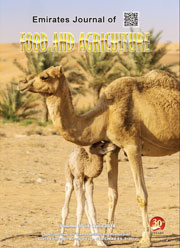THE UPTAKE OF MACRONUTRIENTS BY AN ACTIVE SILICON ACCUMULATOR PLANT GROWING IN TWO DIFFERENT SUBSTRATA
DOI:
https://doi.org/10.9755/ejfa.v25i12.16735Keywords:
Macronutrients, Organic-rich soil cultures, Pennisetum clandestinum, Sand culturesAbstract
Pennisetum clandestinum (Graminae/Poaceae) an active Si-accumulator, was cultivated in two different substrata, both with reduced Si solubility. Plants growing in organic-rich soils contained much less Ca, K, Na and Si, than species growing in sandy soils. Although the highest macronutrient concentrations were associated to the highest Si levels in the organs of P. clandestinum, the R correlation values indicate that Si does not influence the internal balance and the uptake of these elements. In ca 65% of the cases roots have the highest average values regardless of the type of culture, while the contents of Mg in the shoots and roots of P. clandestinum were generally not significantly different (P>0.05). A significant decline of the macronutrient levels associated to the shoots and roots of P. clandestinum was observed from the 4th to the 6th month assay, especially for Ca in both organs, while for Mg and Na the decline is focused mainly in the shoots; K and Si decline is generally below 10%. When average values of Si in shoots and roots of plants collected from organicrich and sandy soils were plotted against the average concentrations of Ca, K, Mg and Na in the same organs, weak but positive R correlation values were obtained - the highest R values were observed for Na and K and the lowest for Ca and Mg, regardless of the culture. Exception for the high R value observed for K, although the influence of Si on the K status in the whole plant is time-depending - R values, diminished from the 4th to the 6th month, as it happens in the majority of the cases. In conclusion, P. clandestinum can grow well and healthily in substrata with acid pH values and high carbonate content and low solubility of Si suggesting that the definition of the essentiality of Si, even in a Si-accumulator plant is still a matter of great controversy.










 .
. 